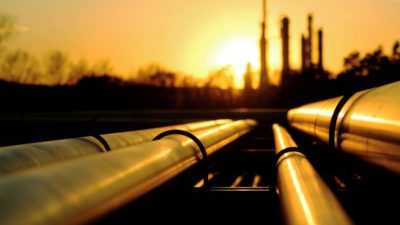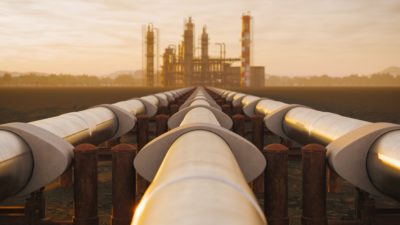A quick look at the range of analyst predictions for 2017 reveals that perhaps no energy player in Canada has better ability to thrive in oil price environments at both the low and high end of the range than Canadian Natural Resources Limited (TSX:CNQ)(NYSE:CNQ)
Bullish predictions from Eric Nutall of Sprott Energy Fund and Pierre Andurand of Andurand Capital see prices for 2017 being around $60. The EIA, World Bank, and Bank of Nova Scotia see oil prices at $51, $53, and $54, respectively. These predictions in the low $50 range could turn out to be dramatically low as investors begin to focus more on the 45% of global production outside the U.S., OPEC, and Russia that is being absolutely decimated (Chinese production, for example, just fell to a six-year low).
Canadian Natural is prepared to thrive in either situation. The company defines two potential pathways for oil prices in 2017 and beyond. The first sees oil at $60 for the year, and in this scenario the company would spend $4.5 billion per year in capital expenditures and would grow production from slightly over 800,000 bpd in 2016 to over one million bpd in 2019. For 2017, Canadian Natural would see free cash flow of $1.4 billion in this scenario.
In a low-price scenario where oil prices are only $45 in 2017, growing to $48 afterwards, Canadian Natural would be able to spend only $2.4 billion of capital annually, which would sustain production at about 800,000 bpd. The company would still have $600 million of free cash flow in this scenario, growing to $1.5 billion in 2018. The company would likely use this free cash flow to buy back shares, boost the dividend, and deleverage its balance sheet before focusing on production growth beyond 2017.
Investors who are concerned about prices falling into the low $40 or below range (an extremely unlikely outcome barring some massive drop off in global oil demand) should be comforted by the fact that Canadian Natural would be able to cover its capital expenditures (which are extremely elevated due to the company’s Horizon expansion) and dividend at $30 oil in Q4 2016.
Canadian Natural’s asset base and asset allocation give it huge leverage
It is clear Canadian Natural is prepared to weather further oil-price weakness, but its key strength comes from its upside leverage to rising oil and natural prices. Many investors associate Canadian Natural with oil, but investors need to remember that natural gas prices are almost as important to Canadian Natural as oil prices. If natural gas prices outperform the very conservative expectations given by Canadian Natural ($2.50/GJ AECO gas prices), free cash flow expectations can greatly exceed expectations.
Canadian Natural obtains about 35% of its production from natural gas and recently became the largest natural gas producer in Canada (exceeding Encana). Canadian Natural accomplished this by purchasing 12,000 natural gas wells and increasing its Alberta well count by 60% between 2013 and the end of 2015. These wells were acquired at extremely low costs due to distress-selling by firms that were in weaker financial positions during the multi-year bear market in natural gas prices.
Since Canadian Natural has no hedges in place, it should see strong leverage to improving natural gas prices, especially considering the fact that it has best-in-class natural gas assets. Currently, Canadian Natural’s natural gas production is focused in the Montney and Deep Basin regions in Alberta, and these regions are highly economic.
In fact, according to a recent TD Bank presentation, Montney and Deep Basin are the first and second in North America in terms of breakeven costs with breakeven prices of $2.75/mmBtu and $3/mmBtu, respectively. Natural gas prices are currently around $3/mmBtu, but are expected to move much higher given that breakeven costs are almost all above $3.
With reasonable debt levels, Canadian Natural is a perfect way to gain low-risk exposure to rising oil and gas prices.








